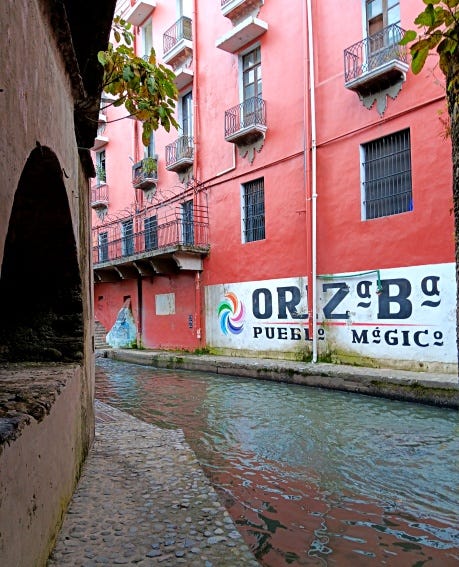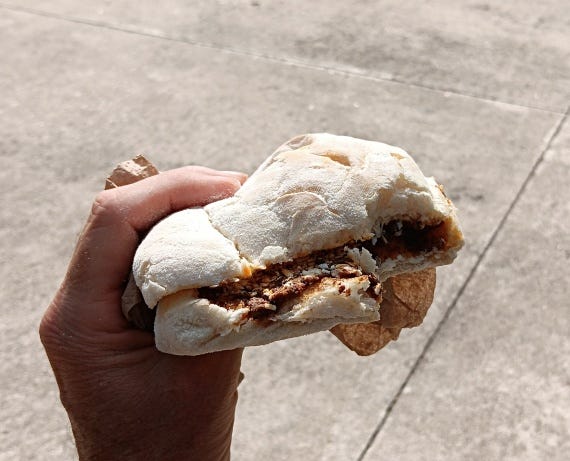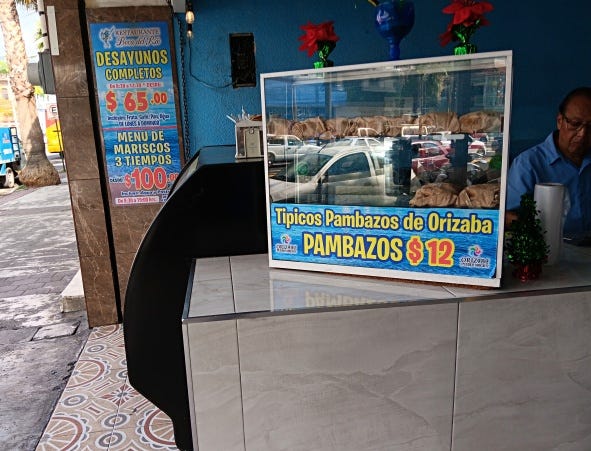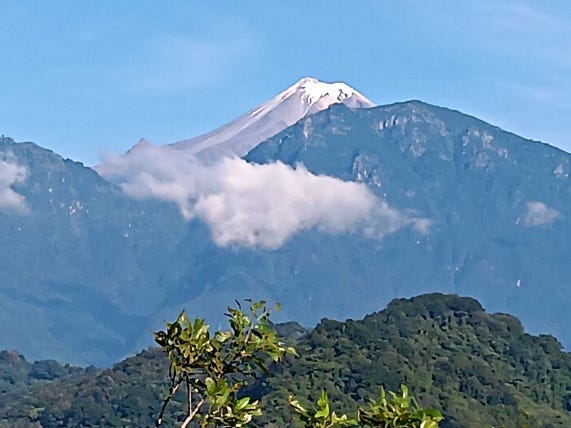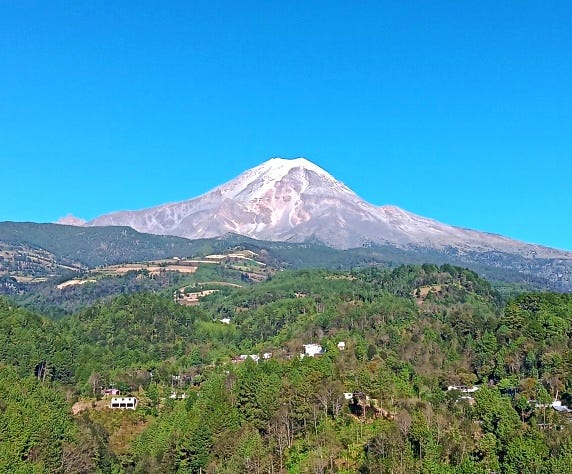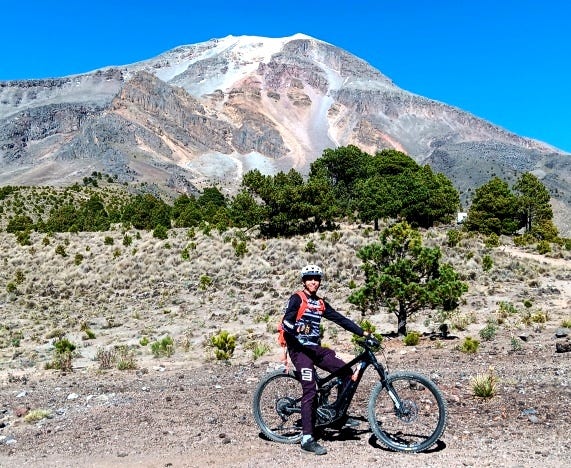The Pambazo and the Peak
There is an everyday, every-person’s delicacy here in Orizaba, and it is called the pambazo. Quite possibly it originated right here in this very old, very down-to-earth, very workaday, yet utterly magical Mexican town.
Do not believe what you see on the internet. A pambazo—in Orizaba, at least—does not have potato, nor is it dipped in red sauce and fried. That’s a subsequent variation from a different region.
Instead, think white and fluffy. Picture a very round, very soft bread bun, powdered white on top with flour, split in half with its insides slathered with black refried beans, crumbs of longaniza sausage, maybe a little mayo, a sprinkle of grated fresh white cheese, perhaps some shredded lettuce. Before the vendor wraps it up, he or she will ask if you want a touch of salsa macha (red pepper sauce) added. Make sure and say yes.
It used to be that, as part of the baking, pambazo buns in Orizaba were tugged at to give them a sharp peak on top. This traditional ornamentation has largely gone by the wayside, and it’s no big deal. What is essential, however, is the powdery white flour on top of the completed sandwich, which wrapping it up to go does not interfere with.
Oh, the joy of sinking your teeth into a pambazo. The ultra-softness, the flavorful spiced filling, its delightfully smooth and bean-creamy texture imbued with chewy meat crumbs, the healthiness. The piece de resistance is the contrasting feeling you get of the dry, abrasive white flour on the outsides of your lips when you smack them.
Then there’s the fact that pambazos are for everybody. There’s a restaurant around the corner from my house, across from a college, that sells them all day to students and passersby from a case by the front register. Here their perfect, real-deal pambazo sets you back 58 cents. One makes a nice snack; two will fill you up.
How did pambazos come to be? Some sources, including Orizaba’s History Salon, claim that Emperor Maximilian and Empress Carlota had something to do with it. This would pin the pambazo’s origins to the very short, very strange period of time in the 1860s when France invaded Mexico and installed an Austrian archduke to rule it.
During their reign, Max and Carly understandably came to like Orizaba very much, and made it one of their hangouts. The lovely climate, lush green mountainsides, and rushing water were a nice respite from Mexico City. Carlota in particular was transfixed by the soaring snow-capped peak visible from town on clear days, which just so happens to be the highest volcano in North America and third-highest North American peak overall. It’s called Pico Orizaba today, and is also still often referred to by its Nahuatl name, Citlaltépetl.
“Can someone make me a dish that symbolizes the beautiful volcano?” Empress Carlota, according to legend, asked. And according to legend, French chef Josef Tüdös stepped up to the plate and delivered the doughy white sandwich, pulled to a sharp peak on top, doused with white flour to represent alpine snows.
This story seems about as plausible as Marie Antoinette actually saying “Let them eat cake”. I mean, come on, folks, a pambazo is not empress food! It’s refried beans, meat crumbs, and bread! And the bread used for pambazos has traditionally been low class at that. The name “pambazo” itself derives from the Judeo-Spanish words pan basso, literally meaning “low bread”. By the 1700s, bread consumption was widespread in New Spain, but all bread was not created equal. Viceroyalty and the upper class enjoyed bread made from the flower of the flour. The rest got pan basso, made from everything else.
It seems much more probable to me that orizabeños had been enjoying their pambazos long before Maximilian and Carlota came on the scene. Perhaps to “slum it up” a bit, the Austri-Mex royals sampled some of the sandwiches when they came through.
What is undeniable is that Pico Orizaba, or Citlaltépetl, is gorgeous, glorious, and right there. It makes 100% sense that orizabeños would have a longtime, everyday, signature food honoring it.
Of course, the mountain has its own legends. It is said that, in the heyday of the Olmec culture, there lived the warrior Nahuani who was always accompanied by her friend and advisor, the osprey Ahuilizapan. One day she had to face a great battle, and was killed. Ahuilizapan, upon witnessing this, with deep pain spread her wings and rose to the highest point of the sky before falling heavily to the earth. In the place where she fell, a mountain gradually formed that over time became an enormous volcano. Sometime later, the osprey returned to lay her eggs and thereby control the fury and eruptions of the volcano.
Pico Orizaba last erupted in 1846. Before that, it was 1687.
Which means I had to go! Not to the top; that’s a Kilimanjaro-scale endeavor which, curiously, almost no one does. I just needed to get as far up its side as a day trip would allow. And couple weeks ago, I finally found someone to take me there—on pedal-assist mountain bikes, no less!
The afternoon before we left, I stopped by my neighborhood pambazo case and got three to put in my rucksack. In addition to all of pambazos’ other attributes, they make a perfect trail food.
Pambazos at 15,000 feet, on the peak itself. What’s better?


